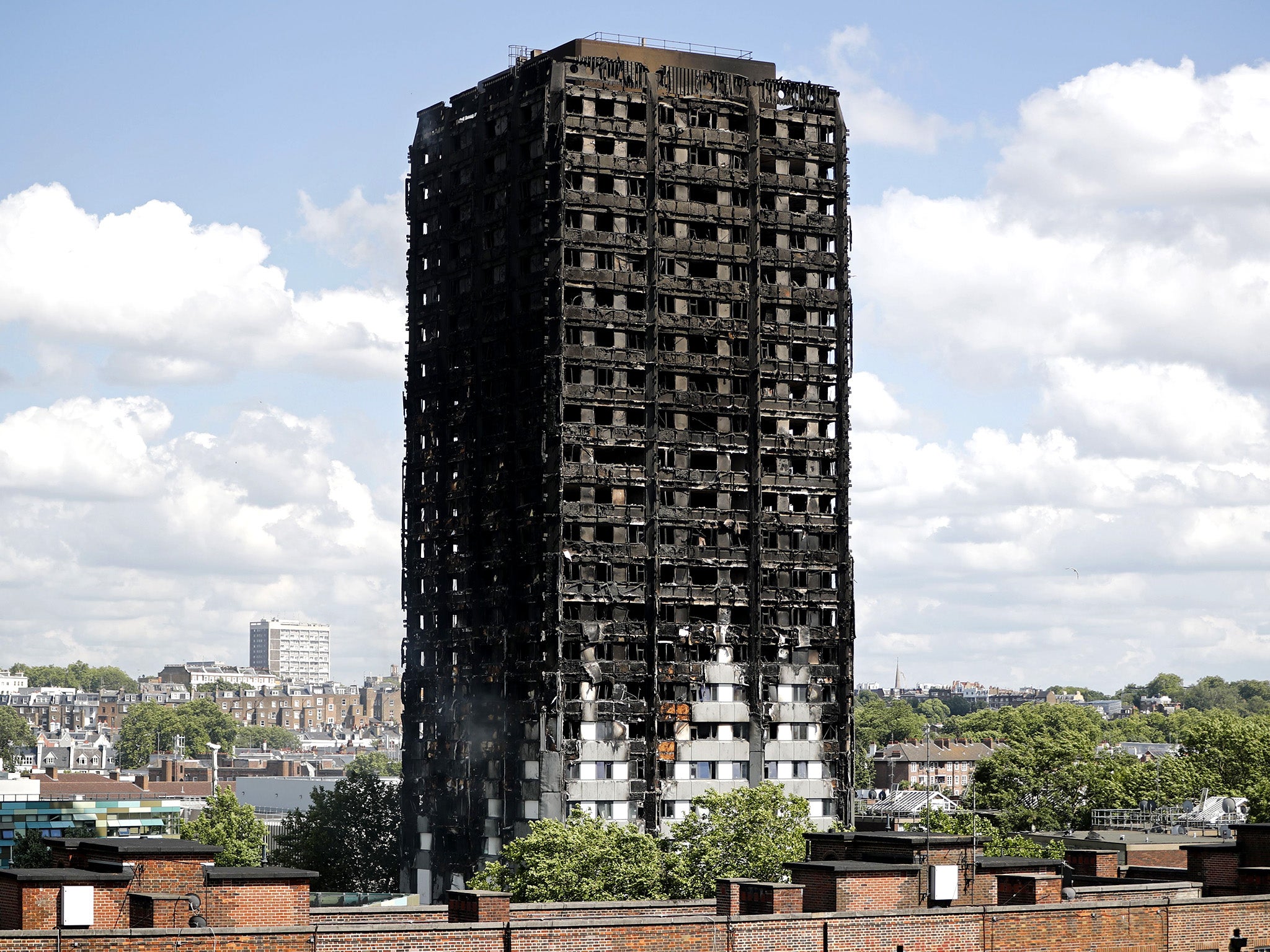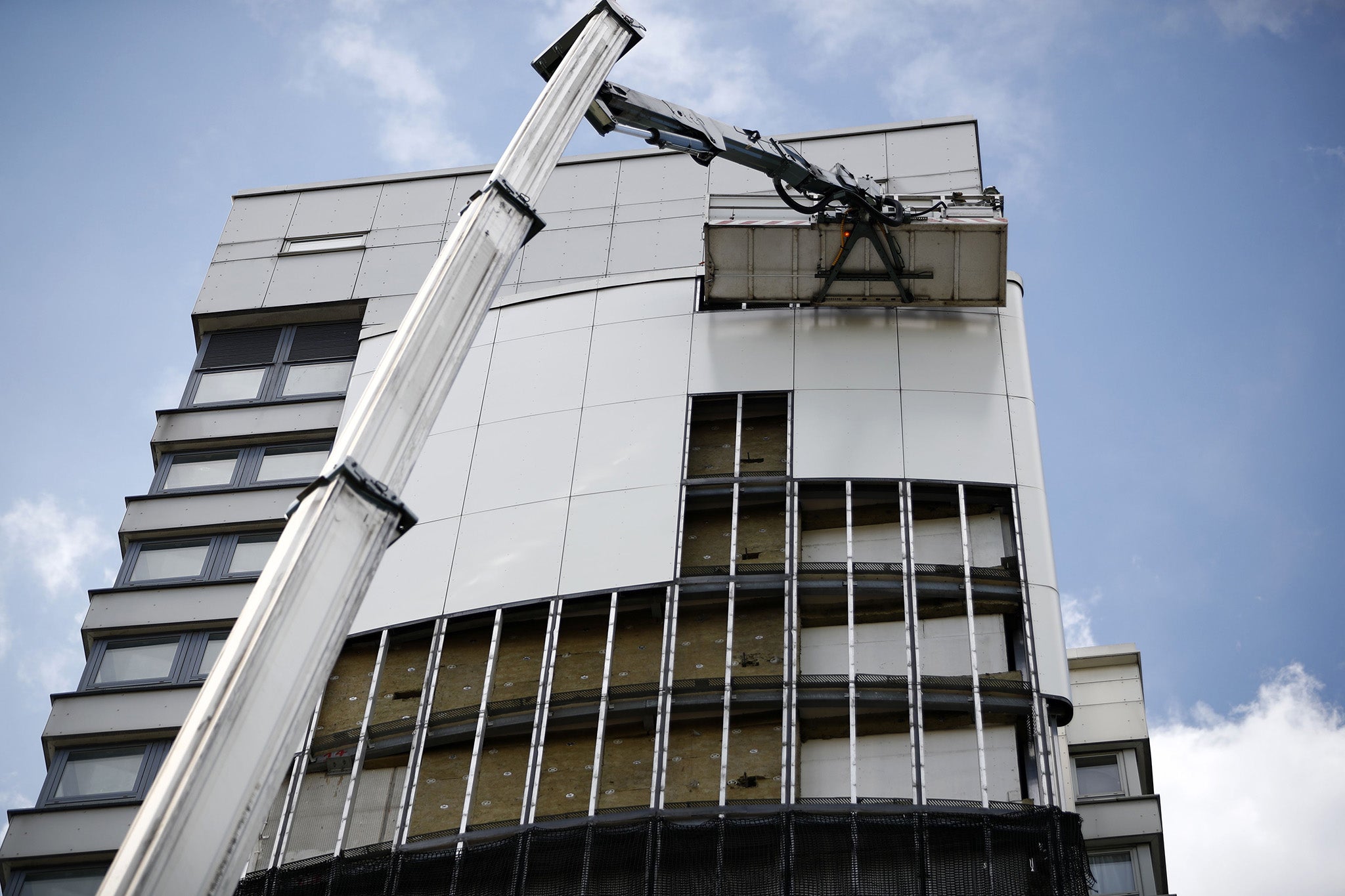Dozens of buildings in UK still have Grenfell-style cladding, new figures show
Safety works far from complete as future funding remains uncertain

Your support helps us to tell the story
From reproductive rights to climate change to Big Tech, The Independent is on the ground when the story is developing. Whether it's investigating the financials of Elon Musk's pro-Trump PAC or producing our latest documentary, 'The A Word', which shines a light on the American women fighting for reproductive rights, we know how important it is to parse out the facts from the messaging.
At such a critical moment in US history, we need reporters on the ground. Your donation allows us to keep sending journalists to speak to both sides of the story.
The Independent is trusted by Americans across the entire political spectrum. And unlike many other quality news outlets, we choose not to lock Americans out of our reporting and analysis with paywalls. We believe quality journalism should be available to everyone, paid for by those who can afford it.
Your support makes all the difference.Dozens of buildings in the UK still have the same type of flammable cladding that was on the Grenfell Tower almost five years after the fire that killed 72 people, government figures show.
Authorities identified 481 buildings with ACM panels, which were blamed for the rapid spread of the 2017 fire.
By last month remediation work had only been finished on 289 of them, meaning 192 – almost 40 per cent – still had unsafe cladding or had not been signed off as safe yet.
Among private sector blocks, fewer than half – 48 per cent – had been signed off as safe.
The Department for Levelling Up, Housing and Communities (DLUHC) said: “A series of measures have been taken to ensure that remediation occurs quickly and safely.
“The government is determined to learn the lessons from the Grenfell Tower tragedy, by making funding available to address the fire safety risks of unsafe cladding on homes and bringing forward the most significant building safety reforms in almost 40 years.”
Michael Gove, the communities secretary, met developers on Thursday to discuss funding for works to rectify cladding and building safety issues.
The Home Buyer's Federation (HBF) said it was right that leaseholders should not have to pay for the work but developers should not be the only ones to pay.
The companies who designed and sold the flammable materials should also be included in discussions about pay, the HBF said.
The meeting followed a pledge from ministers to amend legislation to better protect thousands of leaseholders from being hit with hefty bills for safety work.

Developers have come under fire for leaving leaseholders to pay for safety work on their buildings, with individuals reportedly being charged more than £100,000 to replace dangerous materials.
Mr Gove said he wanted to make developers responsible for the costs of all remediation work.
The DLUHC said Thursday’s meeting was attended by senior executives from the country’s biggest developers, and they agreed that leaseholder should not pay.
It added: “We continue to engage with them to ensure they deliver a fully funded action plan by early March.”
The Building Safety Bill, which is due to undergo further scrutiny in the Lords before potentially becoming law, would give a new regulator the power to prosecute rule-breaking developers and take their properties off the market.
Giles Grover, from the End Our Cladding Scandal campaign, said it welcomed Mr Gove's attempts to pressure developers to “properly engage and provide real help to innocent leaseholders”.
“However, as always, we need to see this actually lead to firm action on the ground to make buildings safe quickly,” he said.
“We remain concerned that the development community will only do the right thing if they are forced to do so.”
Lisa Nandy, the shadow housing secretary, has questioned how Mr Gove would be able to make developers pay without permission from the Treasury to raise taxes on them.
Join our commenting forum
Join thought-provoking conversations, follow other Independent readers and see their replies
Comments